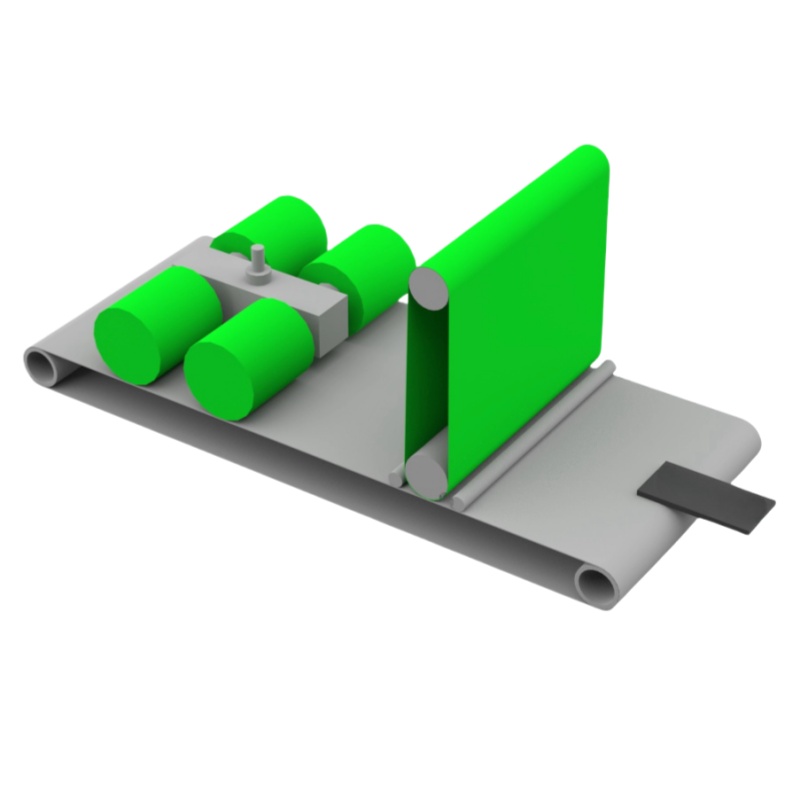MSP-L800 Dry-Type Deburring and Sanding Machine

Deburring and Edge Rounding Machine: Technical Overview & Introduction
1. Product Introduction
A Deburring and Edge Rounding Machine is an essential piece of industrial equipment designed for the precise removal of burrs, sharp edges, and laser oxide layers from metal parts after cutting processes (e.g., laser, plasma, flame cutting, punching). It simultaneously rounds edges and smoothens surfaces, preparing components for subsequent manufacturing stages like welding, powder coating, painting, or assembly.
This automation significantly enhances workplace safety by eliminating manual grinding tasks, reduces labor costs, and ensures consistent, high-quality finishing on every piece. The uniform edges it creates are crucial for improving paint adhesion and corrosion resistance, while also increasing the overall aesthetic value and safety of the final product.
The machine typically combines abrasive belt grinding for heavy burr removal and surface leveling with rotating flap wheels or brush systems for fine edge radiusing and blending. This combination ensures efficient processing of even large, heavy plates with complex cutouts. Workpieces are conveyed through the machine via a powerful magnetic system (or an optional vacuum bed for non-ferrous materials), ensuring secure holding and consistent contact with the abrasive tools without marring the surface.
Key Advantages:
Enhanced Safety: Automates a hazardous manual process, protecting operators from injuries and exposure to metal dust.
Superior Consistency: Produces uniform edge radiusing and surface finish on every part, eliminating human error and variability.
Increased Productivity: Processes parts continuously at a controlled feed rate, far outpacing manual deburring methods.
Improved Part Quality: Creates ideal surface conditions for subsequent processes like welding and painting, leading to higher quality end products.
Versatility: Capable of handling a wide range of materials (steel, aluminum, stainless steel), thicknesses, and part geometries.
2. Technical Specifications Table
The following table consolidates common technical parameters for machines in this category with an 800mm processing width.
| Feature Category | Specification Details | Notes |
| Model | MSP-L800 | Example model |
| Primary Process | Deburring, Edge Rounding, Oxide Removal |
|
| Compatible Materials | Mild Steel, Stainless Steel, Aluminum |
|
| Max. Material Thickness | 0 - 80 mm | Capacity for thin sheet to thick plate. |
| Max. Material Width | 800 mm | Standard processing width. |
| Min. Part Dimensions | 50 x 50 mm | Minimum processable part size. |
| Max. Material Weight | 350 kg | Maximum weight capacity per part. |
| Conveyor Speed | 0.6 - 4.0 m/min | Infinitely variable for process adjustment. |
| Abrasive System | Combination: Abrasive Belt + Flap Wheels | Belt for heavy burr removal, flaps for fine rounding. |
| Flap Wheels | 4 x Ø300 x 300 mm | Quantity, Diameter, and Length. |
| Tool Working Height | 120 mm |
|
| Power Consumption | 16.8 kW / 22.8 kW | Typical operating power / Peak power. |
| Holder/Conveyor System | Magnetic (Vacuum Optional) | Standard magnetic for ferrous metals; vacuum for alloys. |
| Min. Deduster Requirement | 3000 m³/h | Minimum air volume for effective dust extraction. |
| Compressed Air Requirement | 5.0 Bar (Min) | Required pressure for pneumatic systems and optional vacuum. |
| Machine Weight | ~2500 kg | Approximate net weight of the machine. |
| Control System | PLC (Programmable Logic Controller) | For automated, user-friendly operation and parameter storage. |
| Warranty | 1-2 Years | Varies by manufacturer. 16 |
3. Detailed Feature Explanation
Combined Abrasive Processing (Belt + Flap Wheels): This is a key feature for efficiency. The initial abrasive belt station aggressively removes large burrs, slag, and laser oxide from the top surface. The subsequent flap wheel stations then precisely radius the top and bottom edges, blending them smoothly into the workpiece surface for a consistent finish in a single pass. 245
Material Handling System: The electromagnetic conveyor provides strong, reliable holding force for ferrous metals, ensuring parts do not shift during processing. The optional vacuum bed is critical for processing non-magnetic materials like aluminum, copper, or stainless steel (some grades are non-magnetic), expanding the machine's versatility.
Adjustability and Control: The variable conveyor speed (0.6-4.0 m/min) allows operators to fine-tune the process based on material type, thickness, and the desired edge finish (e.g., a slower speed for a larger radius). Modern machines are equipped with PLC control systems and touchscreen interfaces, making it easy to set up, store recipes for different parts, and monitor machine operation. 15
Dust Extraction (Dedusting): Deburring generates significant fine dust. A connection for an external dust extraction system (recommended ≥ 3000 m³/h) is mandatory to maintain a clean and safe working environment, protect the machine's internal components from abrasive dust, and ensure good visibility of the process. 14
Construction and Design: Built with a heavy-duty welded frame (often around 2500 kg), the machine ensures stability and minimizes vibration during operation, which is essential for achieving a consistent finish. Robust construction guarantees longevity and reliability in demanding industrial environments. 45
4. Typical Applications
This type of machine is indispensable in industries that work with cut metal plates and require high-quality, safe edges:
Structural Steel Fabrication: Preparing beams, columns, and plates before painting or galvanizing.
Metal Furniture and Architectural Fabrication: Creating safe, smooth edges on tables, partitions, railings, and cladding.
Transportation and Automotive: Deburring parts for trailers, truck chassis, and agricultural machinery.
Laser Cutting and Metal Service Centers: Providing value-added finishing services for cut blanks.
General Metal Job Shops: Handling a diverse range of customer projects with consistent quality.
5. Conclusion
The 800mm wide Deburring and Edge Rounding Machine represents a significant leap in finishing technology over manual methods. It is a comprehensive solution that enhances safety, boosts productivity, and guarantees unparalleled finish quality. By automating the critical edge preparation process, it ensures parts are consistently "paint-ready" and safe to handle, making it a strategic investment for any modern metal fabrication facility.

















